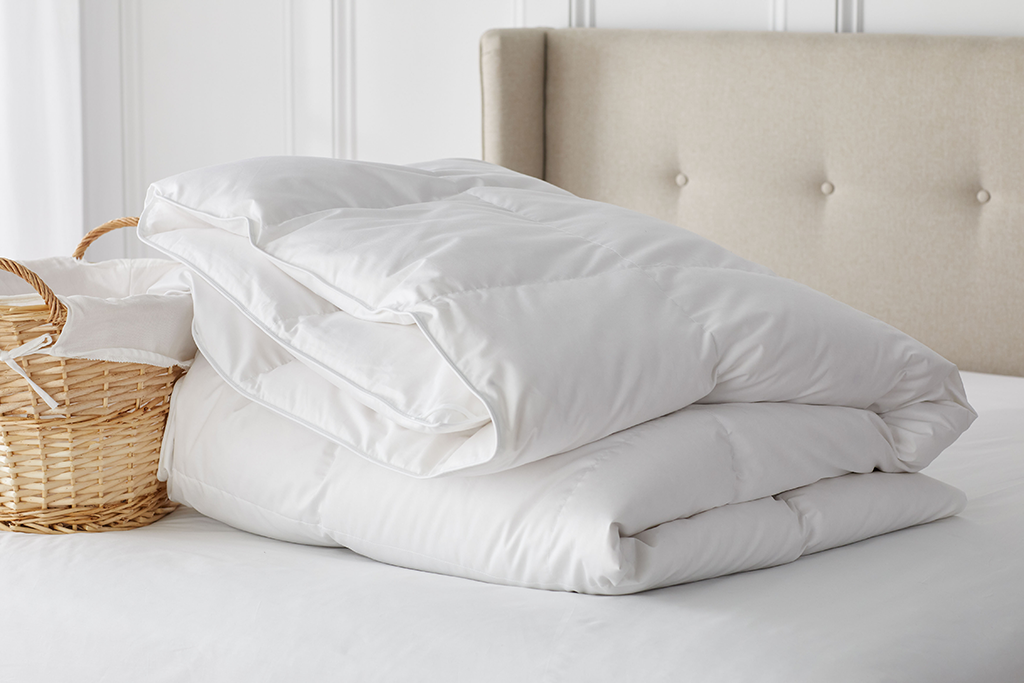How to Wash White Sheets (And Keep Them White)
Knowing the best way to wash white sheets (and keep them bright) is key to maintaining the clean, elegant appeal of an all-white bedding aesthetic. White sheets, duvets, comforters, and other bedding layers create a blank canvas to complement nearly any decor. But that same white background also makes it easier to spot inevitable stains, smudges, and discoloration. Learn the best way to clean white sheets and bedding, plus other tips for keeping your white bed spot-free, in our helpful guide.
How to Wash White Sheets and Bedding
Simply put, the best way to keep white sheets white is to care for them properly. When washed the right way, white linens can stay bright, even after several trips through the machine. Always check product label and follow manufacturer’s instructions; for most bed sheets and other bedding from The Company Store, that means following a few simple instructions:
- Wash white sheets in cold water (lower temperatures are better for the fabric’s fibers) and tumble dry on low heat.
- Wash white sheets separately from light or colored linens. This prevents dyes from darker fabrics bleeding onto the lighter fibers.
- Use the recommended amount of detergent. Extra detergent leaves behind residue and buildup that can cause discoloration over time.
How Often Should You Wash White Sheets?
While we generally recommend washing sheets once a week, you should wash white bedding more frequently—as often as every three to five days. Because sweat and oil transfer from your skin to your sheets while you sleep, white linens can start to look dingy or downright dirty in just a few days. Bedding that doesn’t come directly into contact with your body as you sleep, such as a duvet cover or comforter, doesn’t need to be laundered as frequently. However, if you share your bed with pets, you may find you need to launder your white blankets and duvets more often to keep them white.

The Best Ways to Whiten Dull or Dirty Bed Sheets
Advice abounds regarding how to whiten dingy sheets, but in our expert opinion, the best way to make white sheets bright again is to go back to the basics. Follow these tips to brighten stained or dingy white sheets so they look as good as new.
- Avoid Chlorine Bleach: Harsh chlorine-based bleaches can damage the fabric’s fibers and actually cause white sheets to yellow over time. The best way to whiten dull white sheets or rid them of pesky stains is to wash them with non-chlorine bleach. (Note: While chlorine-free bleach is safe for sheets, some bedding—including our down comforters—cannot be bleached at all, so always check the care label before laundering.)

- Treat Stains Immediately: The longer a stain sits, the harder it will be to remove. When a stain or spill inevitably happens, remove the bedding right away and rinse the spot in cold water. Then, treat it with an oxygenated stain remover before laundering the sheets according to the care label. Make sure the stain is gone completely before drying your bedding, and run through additional wash cycles if necessary: The dryer’s heat can set the stain and make it impossible to remove.
- Hang White Sheets in the Sun to Dry: Line-drying laundry isn’t only eco-friendly, it’s also an excellent option for treating stains—which fade naturally in sunlight—and brightening dingy white linens. Hang sheets and other bedding in a single layer instead of folded over the line, and keep in mind that thicker textiles such as quilts, towels, or blankets may take longer to brighten than sheets.
Tips for Keeping White Sheets and Bedding White
Properly washing white bedding isn’t the only way to keep it bright. A few simple shifts to your everyday routine can help keep your sheets and bedding whiter, longer—and make them easier to clean on laundry day.
- Remove makeup and skincare products before bed. Like your body’s natural oils, any remaining makeup can easily transfer to your sheets, pillowcase, shams, or comforter while you sleep. Wash your face before getting in bed, and make sure lotion, moisturizer, and other skincare products are well absorbed.
- Don’t let pets sleep in bed. In addition to carrying dander that can aggravate allergies and affect your sleep, pets also track in dirt—the enemies of a clean white bed. Purchase a cozy pet bed for your four-legged friends, and keep your white bed spot-free by saving it for humans.
- Bid adieu to bedside snacks. Among the many unintended consequences of eating in bed are spilled drinks, greasy fingers, and other messes that may ruin white sheets. Play it safe: reserve the bed for rest and limit snacks to the kitchen, dining room, or living room.